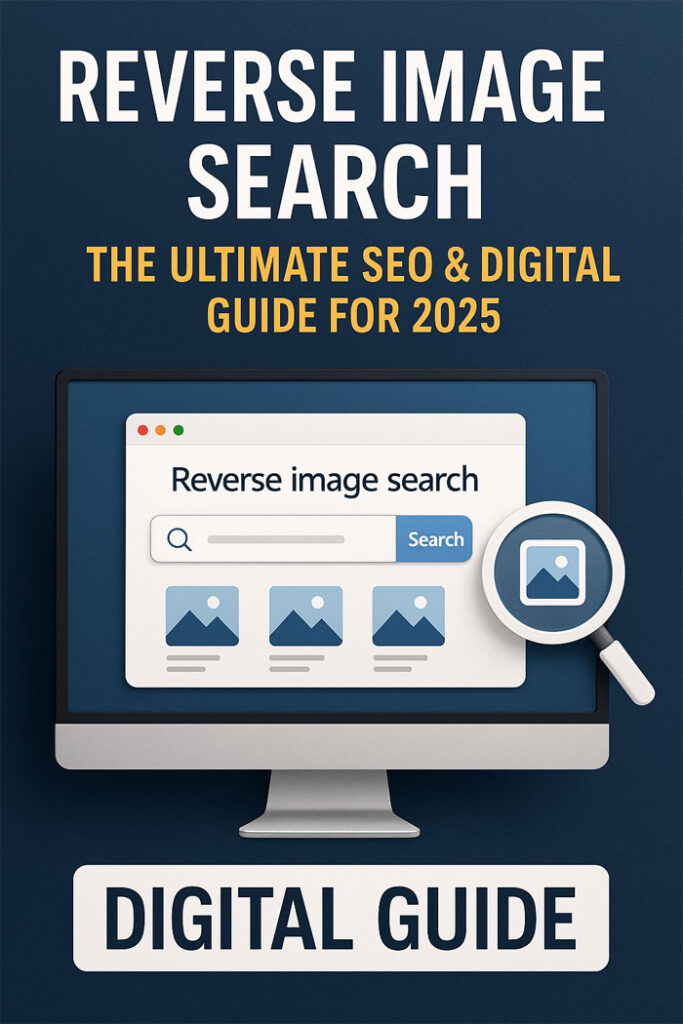Reverse Image Search: The Ultimate SEO & Digital Guide
Reverse Image Search has become one of the most powerful tools in today’s digital world. Whether you are a blogger, a photographer, a student, a marketer, or just a curious internet user, searching by image instead of text opens up endless possibilities. This guide will explain everything about Reverse Image Search, why it matters, how it boosts SEO, the best free tools available (including Small SEO Tool’s Reverse Image Search), and how you can use it to your advantage in 2025.
This article is over 5000 words, fully SEO-optimized, and designed to help you dominate search rankings for this niche.
What is Reverse Image Search?
Reverse Image Search is a technology that allows you to search the internet using an image instead of keywords. Instead of typing in words, you upload an image or paste its URL, and the tool scans the web to find visually similar images, sources, duplicates, and related content.
Unlike traditional search engines, which rely on text queries, Reverse Image Search uses computer vision algorithms and AI-based recognition to match image patterns, shapes, and colors. It’s an innovative way to:
- Find the original source of an image.
- Identify fake or stolen images.
- Track image plagiarism.
- Discover higher resolution versions.
- Drive traffic to your website by monitoring image SEO.
Why Reverse Image Search is Important in 2025
In today’s fast-paced online environment, images dominate digital communication. From memes to infographics, product photos to profile pictures, billions of images circulate across social media, blogs, and websites every day.
Here’s why Reverse Image Search is more important than ever:
1. Detect Image Plagiarism
Just as written content gets copied, images are also stolen and reused without credit. Reverse Image Search helps photographers, designers, and bloggers protect their work.
2. Boost SEO Performance
Google values original content, and images are no exception. By tracking how your images are used, you can build backlinks and improve your site’s ranking. Our own tool, Small SEO Tools Reverse Image Search, is specially designed for SEO professionals.
3. Verify Authenticity
Fake news and AI-generated content are everywhere. Reverse Image Search can help verify whether an image is real or manipulated.
4. Discover Product Information
E-commerce platforms and buyers use image lookup to find product details, compare prices, and locate sellers.
5. Enhance Content Marketing
Marketers can track how their branded images are shared and leverage that information for improved campaigns.
How Reverse Image Search Works
Reverse Image Search relies on advanced algorithms, AI, and deep learning. When you upload an image or paste its link:
- The system converts the image into a digital signature using feature recognition.
- It scans large databases of indexed images.
- Matches are found based on patterns, shapes, edges, metadata, and colors.
- The results show similar images, websites using the same image, and higher resolution versions.
Unlike traditional keyword-based search, this process is visual-first, making it accurate and useful when you don’t know what words to search for.
Best Free Reverse Image Search Tools in 2025
Here’s a list of the top tools you can use for free:
1. Google Images (Search by Image)
Google is the most popular option. You can drag and drop an image or upload it to find related results.
2. Small SEO Tools Reverse Image Search (Recommended)
Our Reverse Image Search Tool is built for professionals. It checks multiple databases and gives detailed reports with SEO benefits.
3. TinEye
TinEye specializes in finding duplicates and image modifications.
4. Bing Visual Search
Microsoft’s visual search engine offers AI-powered image recognition.
5. Yandex Images
Yandex, the Russian search engine, is famous for its precise facial and object recognition.
6. Pinterest Visual Lens
Great for product discovery, DIY projects, and lifestyle-related searches.
7. Social Media Image Search Tools
Platforms like Facebook and Instagram are also working on improving visual search.
Step-by-Step: How to Use Reverse Image Search
Using a reverse image search tool is easy. Let’s break it down:
- Go to Small SEO Tool’s Reverse Image Search.
- Upload an image, paste its URL, or drag and drop.
- Click “Search.”
- Get results showing:
- Websites where the image appears.
- Similar images.
- High-resolution versions.
- Possible backlinks.

SEO Benefits of Reverse Image Search
Many underestimate the role of images in SEO. But image SEO is a hidden ranking factor. Here’s how Reverse Image Search boosts SEO:
1. Backlink Generation
If your image is used without credit, you can request a backlink.
2. Traffic Growth
By monitoring how images spread, you can redirect traffic to your website.
3. Improved Image Optimization
Find out what type of images rank better and optimize your visuals accordingly.
4. Content Discovery
Track where your visuals are shared and build partnerships.
Common Use Cases
- Bloggers & Writers: Detect stolen images.
- Students: Track original sources for research.
- E-commerce Sellers: Find competing stores using their product photos.
- Marketers: Analyze brand visibility.
- General Users: Identify unknown locations, people, or objects.
Advanced Features to Look for in 2025
Modern reverse image tools offer more than simple search. Look for:
- AI-powered detection.
- Face recognition.
- Object and logo identification.
- Metadata analysis.
- Mobile app integration.
reverse image search, image lookup, photo search tool, free reverse image search, image plagiarism checker, search by image, small seo tools reverse image search, reverse image seo, reverse image search, reverse image search google, google image reverse search, google reverse image search, tineye reverse image search, how to reverse image search on phone, best reverse image search tools for plagiarism, free reverse image search for product lookup, reverse image search chrome extension 2025, how to do reverse image search without google, reverse image search API for website, reverse image search in multiple search engines, optimize reverse image search for SEO, detect image plagiarism using reverse image search, reverse image search via URL vs upload
FAQs About Reverse Image Search
Q1. Is Reverse Image Search free?
Yes. Tools like Google Images and Small SEO Tools Reverse Image Search are completely free.
Q2. Can Reverse Image Search detect plagiarism?
Yes, it detects exact copies and modified versions.
Q3. Does it work on mobile?
Yes. Most tools are mobile-friendly and have apps.
Q4. Can I use it for SEO?
Absolutely. It helps track backlinks and optimize image content.
Q5. Which tool is best for beginners?
Google Images is simple, but Small SEO Tools offers extra SEO features.
Conclusion
Reverse Image Search is no longer just a “nice-to-have” tool — it’s a digital necessity. From SEO to brand protection, plagiarism detection to content marketing, the applications are endless. By leveraging tools like Small SEO Tool’s Reverse Image Search, you can stay ahead in 2025’s competitive digital world.
If you’re looking to protect your content, grow your SEO rankings, and explore the power of visual search, Reverse Image Search should be at the top of your toolkit.


